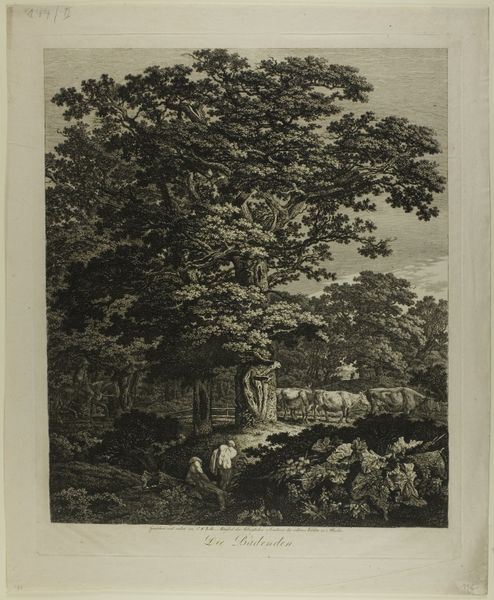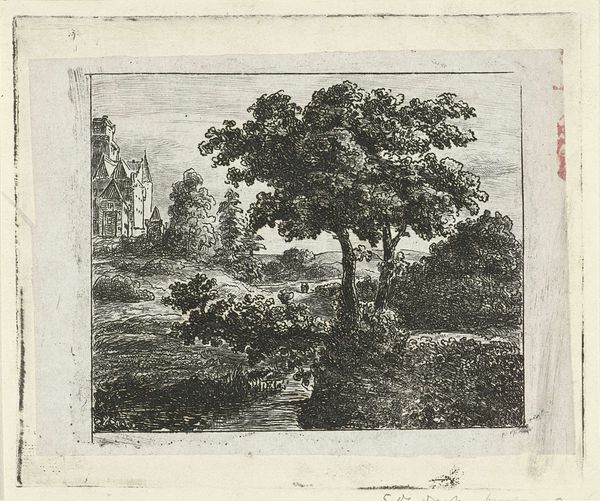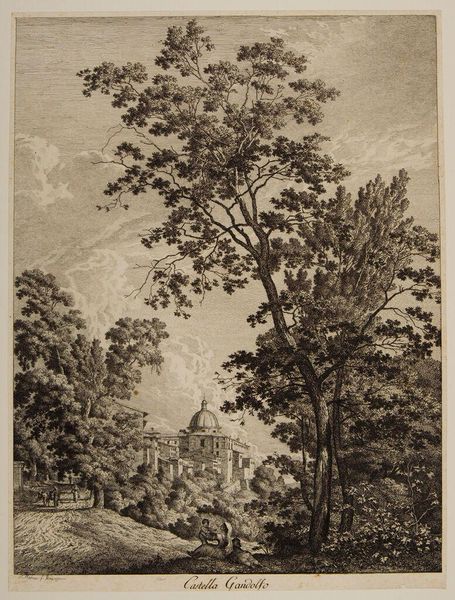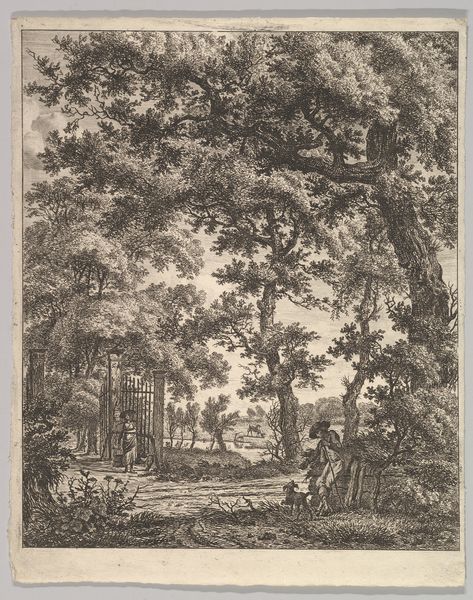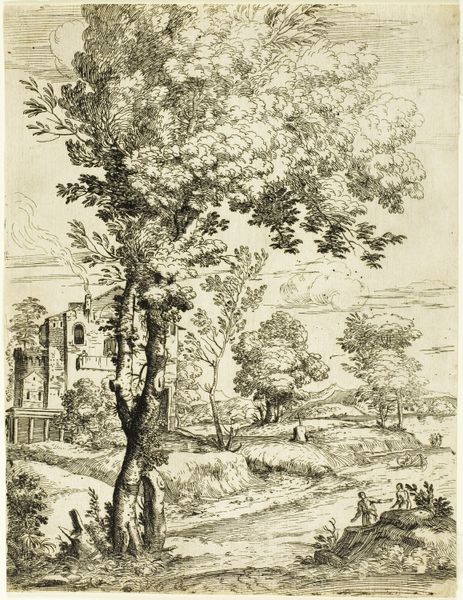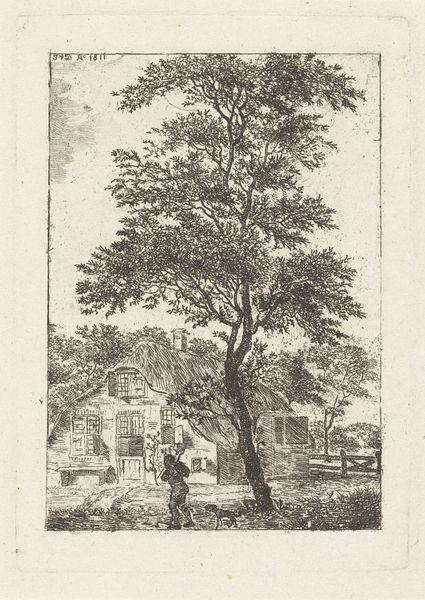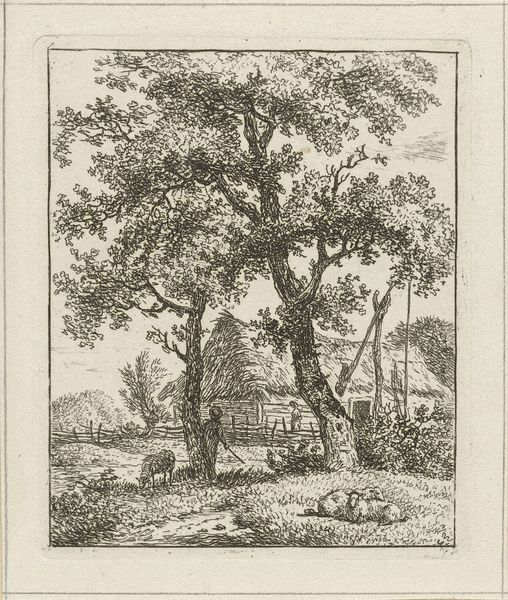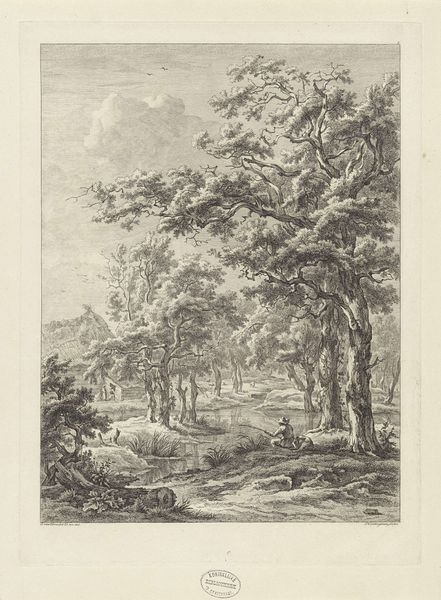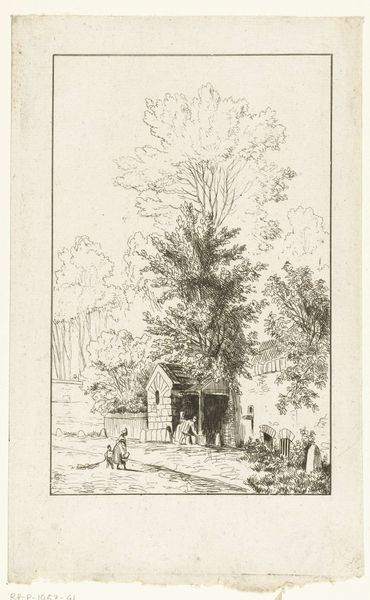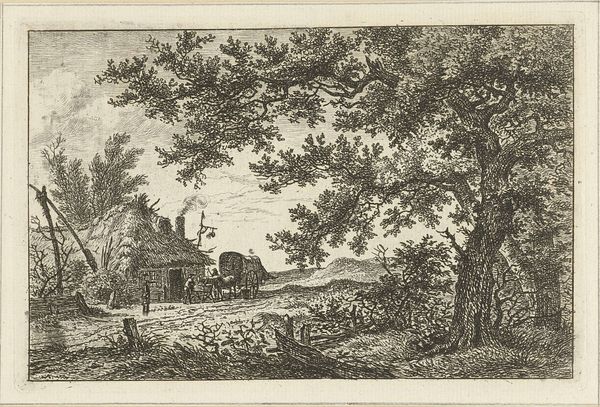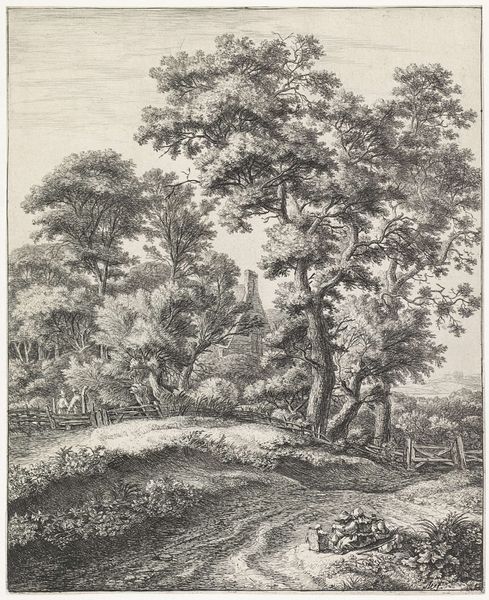
drawing, print, etching, pen, engraving
#
drawing
# print
#
etching
#
old engraving style
#
landscape
#
romanticism
#
pen-ink sketch
#
line
#
pen
#
engraving
#
realism
Dimensions: height 165 mm, width 117 mm
Copyright: Rijks Museum: Open Domain
Curator: There's a lovely calm to this work; it's an etching and engraving on paper, dating from between 1809 and 1837, entitled "Landschap met boom, brug en huis" – or, "Landscape with tree, bridge, and house" – created by Pieter Bartholomeusz. Barbiers, now residing here at the Rijksmuseum. Editor: It feels incredibly detailed. I'm drawn in by the sheer quantity of individual marks that compose the scene. How was such intricacy even achievable? Curator: Well, the work's achieved through a combination of etching and engraving, a process that would have been fairly laborious. Barbiers likely would have started with a metal plate, covering it in a wax-like ground. He’d then sketch his design, exposing the metal where the lines are drawn. Then comes the etching – immersing the plate in acid, which bites into the exposed lines. Engraving provides sharper lines after the plate is acid etched. All a dance of labor and corrosive chemistry. Editor: So, the finished print is a direct result of a collaboration between the artist, the materials he had on hand, and the processes involved in manipulating them. How was an image like this typically consumed at the time? Curator: Prints like these had multiple functions. Commercially, they were sold individually or as part of bound collections, providing affordable access to art for a wider audience than paintings alone. They also served a crucial function in shaping cultural ideas about landscape and nationhood at a critical juncture. Picturesque scenes became almost like nationalist emblems. Editor: Interesting how these depictions could be consumed on an individual basis through prints, impacting a sense of collective identity in an emergent Dutch state. What about Barbiers' background—did it influence the social commentary imbued in these images? Curator: Barbiers came from a family of artists. He absorbed traditions of landscape and genre painting that were being transformed. This print sits right at the cusp of the Romantic movement. Consider how it leans on close observation and fidelity. He used it as a mechanism for translating that vision onto paper, shaping how a local audience would interpret nature. Editor: And in turn, reflecting Barbiers place within, and perhaps his reaction to, emerging markets for art during the height of Romanticism. It speaks to a wider economy where artistic expression becomes intricately bound with audience perception and evolving artistic trends. I'm grateful for your material and historic perspective! Curator: It is, indeed, where artistic vision meets social context, and that gives "Landschap met boom, brug en huis" a relevance that goes far beyond its charming surface.
Comments
No comments
Be the first to comment and join the conversation on the ultimate creative platform.
